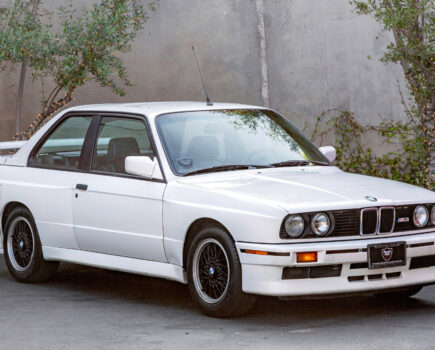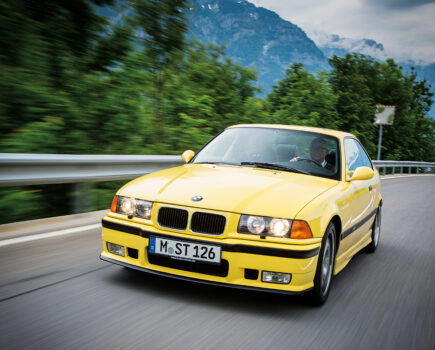The E46 3 Series revived the CSL nameplate, further strengthened BMW’s place in the small executive car sector, and brought the performance diesel into the limelight
Words: Jon Burgess
Bigger, faster and more sophisticated than the car it replaced, the E46 3 Series picked up where the E36 left off with panache. BMW took no chances when thoroughly overhauling its volume seller; the new car could not encroach on the dimensions of the 5 Series (E39) but also had to act as the contemporary foil to the Rover 75, whose launch was less than two years away under BMW’s Rover ownership.
Work on the E46 3 Series began in 1993 when chief designer Chris Bangle and in-house exterior design team leader Ian Cameron joined forces with Erik Goplen of DesignworksUSA, a BMW-owned consultancy. It marked the first time a foreigner had had control of a BMW’s styling. Finalising designs for the E46 in 1996, Bangle – best known for his work on the Fiat Coupe – would gain infamy among the marque faithful; his 2002 7 Series (E65) and 2004 5 Series (E60) divided opinion like few BMWs before or since. Briton Ian Cameron, among many other roles, would laterbe pivotal in the creation of the L322-generation Range Rover.
The new 3 Series was 23mm taller and 60mm wider in front track and BMW fought to keep weight down; while the E46’s body was all new, it claimed a 70 per cent improvement in torsional stiffness over the E36 whose layout it inherited. Suspension components, including the control arms for its ‘C’-arm rear end, were made of aluminium.
Rumours were rife that BMW was to end production of its iconic straight-six for the E46; while V6s and V8 engines were tried (the latter would appear in an E46 GTR in 2000 for a ten-unit homologation run), engineers concluded that, unless packaging was at a premium, a straight-six was superior in operation and in terms of smoothness. The big news with the E46 was via its diesel engines. The four-cylinder M47 would become infamous; the other, the six-cylinder, 3.0-litre M57, would become the darling of the executive oil-burners.
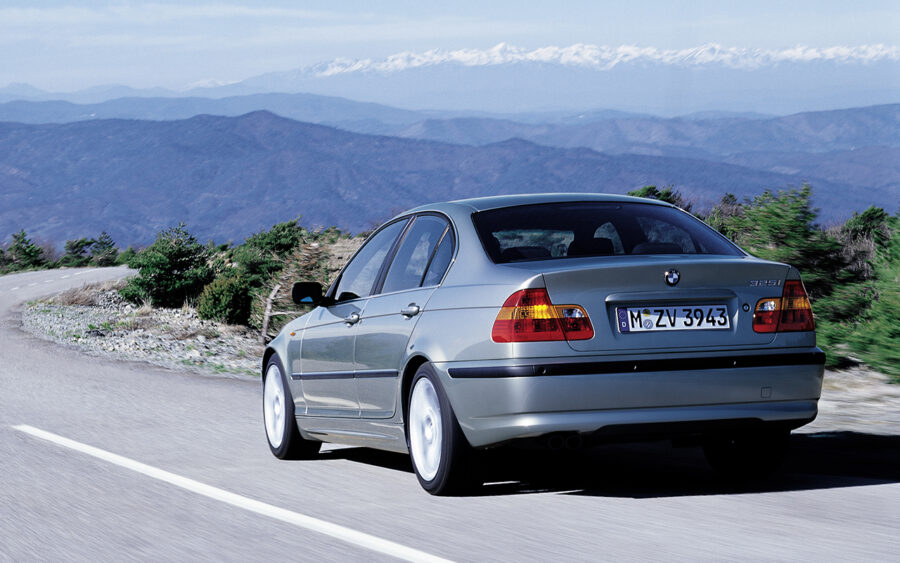
Both engines allowed BMW to capture even more market share than previously; the spectre of the slow-selling E30 324d was finally history. So too was the notion of a spartan, twitchy BMW; even the 316i came with air conditioning and ASC+T traction control.
BMW extended its factories and reach for the E46, producing the car in three German factories (and in South Africa) to meet demand as saloon, Coupe (Ci), Touring, Compact and Convertible styles were released in a steady stream between 1997 and 2000. Completely knocked down (CKD) 3 Series kits would later be built as far afield as China, Mexico, Russia, Indonesia and Malaysia.
Of course, with the arrival of the Coupe (Ci), thoughts quickly turned to the arrival of a new M3. Aggressively kitted, clad with aluminium panels, comprising doors, boot and bonnet, the heart of the new car, released in 2000 as a coupe and convertible, was its 3.2-litre ‘S54’ straight-six.
BMW’s M Division realised that the block of the outgoing M3’s S50 was near its limit; a cautious 44mm overbore gave 343bhp, a 7900rpm deadline and a new, iconic nametag: the S54. Unlike the E36, there was no four-door M3; a single Touring was built, but not taken further.
The M3 would be further honed with 2003’s M3 CSL, a 360bhp, limited edition, 110kg lighter variant of the car, complete with a carbon fibre roof, door cards and centre console. Quicker steering and modified suspension further separated the CSL from the standard M3; not only did it revive the sacred CSL nameplate (brought back for a third time with 2022’s M4 CSL) but it also divided opinion owing to the M Division’s decision to make the CSL without a manual gearbox.
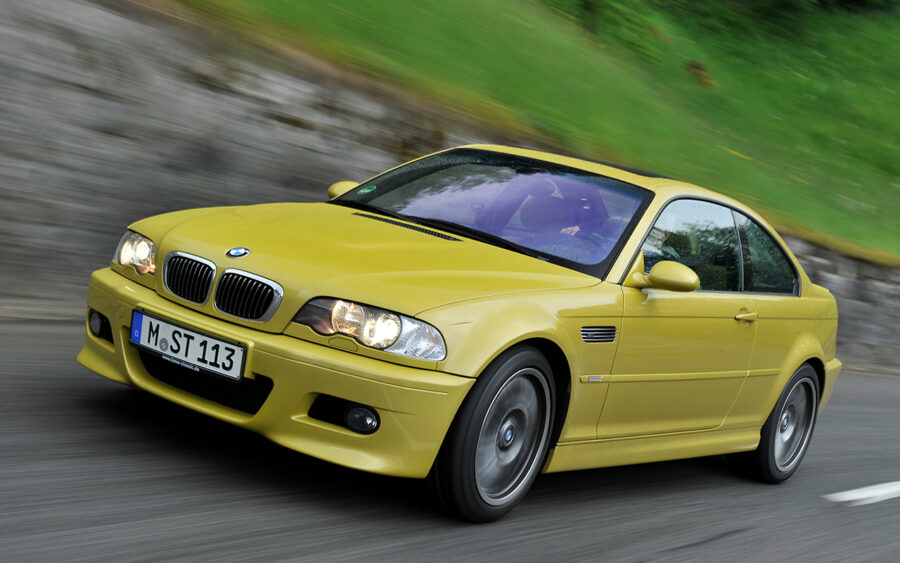
The CSL used a variant of the Getrag-Sachs Sequential Manual Gearbox II, a paddle-shift unit introduced in 2001 with an automated clutch. Lifting off between gear changes obviated many of the clunks and jolts criticised in period; not everyone was prepared to adjust their driving technique and a cottage industry later sprung up to convert CSLs to six-speed manuals.
After 1400 units (422 of which came to the UK), the CSL was discontinued in 2004. The E46 was slowly being wound down in favour of the E90, its successor, which took over two years later.
From the lowliest 316i to the M3 CSL, the E46 was a hard act to follow. Never again would a 3 Series be so elegant, nor could BMW rely on diesel engines to pull in buyers. The curtailment of the 3 Series Compact in 2004 saw a fracturing of BMW’s model range, establishing even-numbered models as a mainstay. The E46 was an icon that that saw BMW into the new millennium and beyond.
BMW 3 Series (E46) timeline
1997
(November) Fourth-generation 3 Series (E46) introduced as a four-door saloon.
1998
Double VANOS (Variable Nockenwellen Steuerung – inlet and exhaust valve timing) introduced on all six-cylinder models.
New 2.0-litre diesel (320d, with the now infamous ‘M47’ engine) launched in February
Coupe (Ci) debuts in November in 320, 323 and 328 specification.
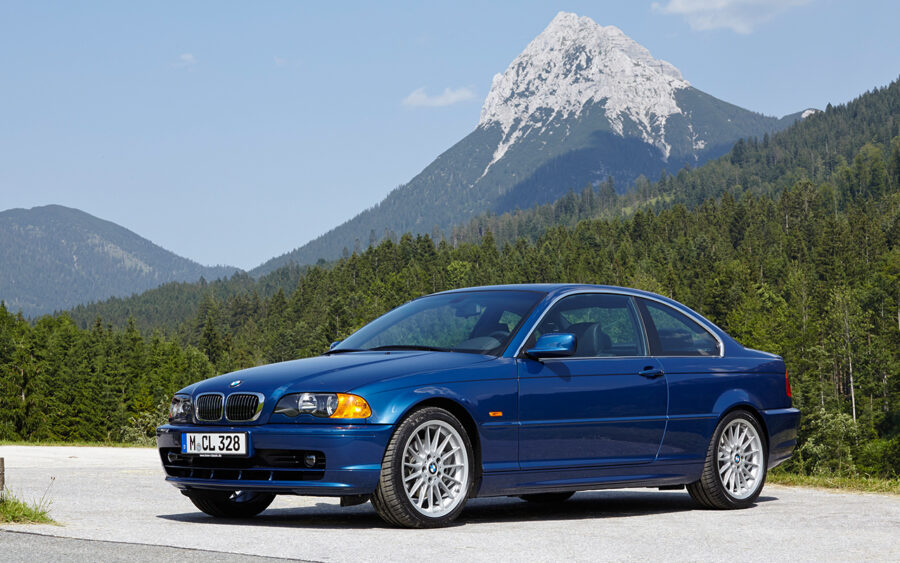
1999
‘Entry level’ 316i (1895cc) debuts in March
Touring (estate) introduced in May
3.0-litre diesel (330d) arrives in September
M3 previewed at the Frankfurt Motor Show
2000
Compact (E46/5) launched on heavier, wider E46 platform. ‘Steptronic’ manual shift options added to ZF automatics.
M3 on sale in Germany in October, rest of world follows.
M3 convertible confirmed in November.
Convertible production begins in December.
2001
Limited run, ten-unit, 4.0-litre V8-engined, M3 GTR released as a homologation special for the American Le Mans Series.
Sequential Manual Gearbox II (SMG II) released.
CSL name revived for the M3 CSL, previewed at that year’s Frankfurt show.

2002 model year facelift for saloon and Touring released in September; changes included altered headlights, tail-lights, grille, bonnet, front wings and front bumpers. Headlights upgraded to xenon; bi-xenon units by the following year.
Numerous six-cylinder replacements arrive; 325i replaces 323i, while 330i replaces 328i. 320d receives uprated M47 engine (M47TU).
2003
Adaptive headlights become available; 330d engine uprated (M57 to M57TU).
US specific ‘ZHP’ performance package released for 330i saloons ; higher lift camshafts and heavy duty suspension fitted.
2004 model year facelift for coupe and convertible rolled out in March; M3 unchanged
Sales of much awaited, SMG II only M3 CSL begin in the UK in August.

2004
Production of M3 CSL ends after 1400 units produced; 422 come to the UK.
Production of E90 series, the E46’s replacement, begins in December.
Production of the E46/5 Compact ends.
US-only ‘ZHP’ package released for 330Ci and convertible.
2005
M3 Competition Package launched in January in US (ZCP package); special Interlagos Blue colour, effectively CSL specification apart form special fore/aft spoilers and carbon fibre roof.
Sold in the UK as the ‘M3 CS’; crucially, the manual or SMG II could be specified.
E46 production winds down further in all German, South African and CKD factories; last 318ds and 330ds produced. ZHP 330i saloon production ends for US.
2006
Last year of E46 production, limited to key four and six-pot models. 318i, 325i, 330i, 330Ci and convertible ‘ZHP’ and M3 only variants left in production for EU and US.


